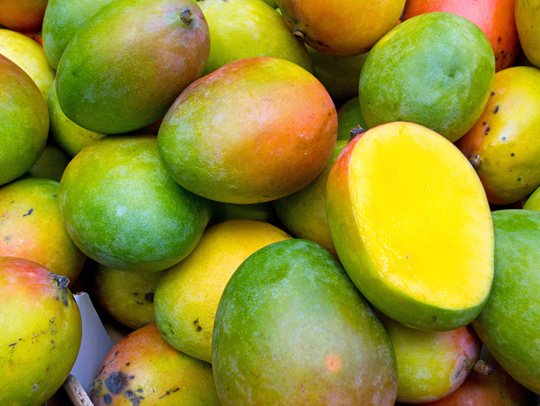Mangos Poised for a Strong Season Heading into Spring
March 5, 2021 | 2 min to read

Orlando, Florida – The National Mango Board (NMB) projects the total volume of mangos shipped to the United States over the next two months to be 34 percent higher year-over-year. The 2021 Guatemalan season is expected to be about 40 percent higher year-over-year compared to 2020, which was cut short due to COVID-19.
The Guatemalan mango season began the last week of February and is expected to run until the first week of June, with a projection of approximately 4 million boxes. The 2020 season was cut about four weeks short due to the pandemic, resulting in 2.8 million boxes, or about 20 percent less volume than projected. From 2015 to 2019, the average shipment from Guatemala was about 3.8 million boxes.
“We usually see numbers around 4 million total boxes for Guatemala in any given season,” said NMB Executive Director Manuel Michel. “Since the 2020 season was impacted by COVID-19, it will obviously have an effect on year-over-year numbers, but when looking at the averages, our 2021 projection of 4 million boxes is very much comparable to what we usually see.”
Peru and Mexico are currently harvesting, packing, and exporting. The Peruvian season is projected to be about 6 percent lower year-over-year, while the Mexican season (through the end of June) is expected to be about 14 percent higher year-over-year. Mexico’s 2020 mango shipments were also affected by the pandemic during the months of March and April, but the 2021 mango volumes during the same period are projected to be normal when compared to prior years.
“We encourage anyone who is interested in learning more about mango crop projections and shipment information to subscribe to the weekly Mango Crop Report via our website, Mango.org,” Manuel said. “This robust report provides information about volumes, varieties, and shipments from main producing countries to the United States.”
The Mango Crop Report is now available both in English and in Spanish.
About National Mango Board
The National Mango Board is an agriculture promotion group supported by assessments from both domestic and imported fresh mangos. The board’s vision, for mangos to move from being an exotic fruit to a daily necessity in every U.S. household, was designed to drive awareness and consumption of mangos in the U.S. marketplace. One serving or ¾ cup of the superfruit mango contains 70 calories, 50% of daily value of vitamin C, 15% of daily value of folate, 15% of daily value of copper, 8% of daily value of vitamin A, 8% of daily value of vitamin B6, 7% of daily value of fiber and an amazing source of tropical flavor. Learn more at mango.org.
